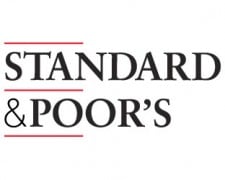 Noting that Gray Television has reduced its leverage and improved its liquidity, Standard & Poor’s has raised the company’s corporate credit rating. The new rating is still in junk bond territory, but moving the right direction.
Noting that Gray Television has reduced its leverage and improved its liquidity, Standard & Poor’s has raised the company’s corporate credit rating. The new rating is still in junk bond territory, but moving the right direction.
S&P raised its corporate credit rating on Gray to “B” from “B-“ and added that the rating outlook is stable. All related issue-level ratings on the company’s debt were also raised by one notch in conjunction with the upgrade, while all recovery ratings on the debt issues remain unchanged.
“The upgrade reflects the company’s progress in reducing its gross debt to average trailing-eight-quarter EBITDA, and our expectation that leverage will continue to decline toward 7x in advance of Gray’s 2014 revolving credit maturity. We also expect the company to make continued progress refinancing or repaying its costly 17% preferred stock–a major risk to its capital structure. The ‘B’ rating reflects company’s still-high debt leverage and weak discretionary cash flow, as well as our expectation that the company will maintain adequate headroom with its financial covenants in the absence of any further tightening of covenant thresholds,” said the S&P analysis.
“The stable rating outlook reflects our expectation that Gray will maintain lease-adjusted debt to average trailing-eight-quarter EBITDA below 7.5x. We also expect the company to generate modest positive discretionary cash flow in 2012. Our rating on Gray also reflects our assessment of the company’s business risk profile as “fair” and its financial risk profile as “highly leveraged,” based on our criteria. We view Gray’s business risk profile as fair because of its relatively good EBITDA margin compared with peers’, despite a lack of adequate critical mass and its concentration in small-to-midsize TV markets. Factors in our assessment of Gray’s financial risk profile as highly leveraged include its weak EBITDA coverage of interest, high debt leverage, and minimal discretionary cash flow. The company’s debt to average trailing-eight-quarter EBITDA of 7.6x and funds from operations to debt of 5.2% are in line with Standard & Poor’s financial risk indicative ratios of greater than 5x and less than 12%, respectively, for a highly leveraged financial risk profile. Gray operates 36 TV stations in 30 small and midsize U.S. TV markets, reaching only about 6% of U.S. TV households. The company generates the majority of its revenue and EBITDA from TV stations affiliated with the CBS and NBC networks. Stable, market-leading local newscasts and overall ratings of the company’s TV stations–many in state capitals or in cities with major state universities—are key supports to its business profile, help attract political advertising, and contribute to the company’s relatively good EBITDA margin compared with peers,” said the ratings statement.
“At the same time, the cyclical nature of TV advertising, the mature long-term growth prospects of TV broadcasting, and increasing competition for audience and advertisers from traditional and nontraditional media limit upside potential for Gray and other TV station groups. Under our base-case scenario for 2012, we expect Gray’s revenue to grow at a high-teens percentage rate and EBITDA to rise by 40% to 45%, mainly because of sharp increases in political ad revenue and retransmission fees from recently renewed carriage contracts, despite only low-single-digit growth in core ad revenue,” S&P added. “We also expect substantial EBITDA margin expansion, as the proportion of political advertising in the revenue mix is significantly higher for Gray than for its peers, leading to higher revenue and EBITDA variability between election and nonelection years. Gray’s operating performance in the fourth quarter of 2011 was in line with our expectations. EBITDA dropped 46% on a 26% revenue decline because of lower political ad revenue in a nonelection year. Local and national ad revenue growth was minimal, at slightly under 3%. For full-year 2011, the EBITDA margin was 32%, down from 39% in 2010, as high-margin political ad revenue declined more than 75% in a nonelection year. This was a sharper margin decline than many of its peers’, because Gray had a relatively higher proportion of political advertising in its revenue mix in 2010. As of Dec. 31, 2011, Gray’s debt (adjusted for leases, pensions, and preferred stock) to EBITDA ratio was very high, at 9.0x, up from 6.6x a year ago. Using average trailing-eight-quarter EBITDA to smooth the differences between election and nonelection years, Gray’s lease-adjusted debt to EBITDA was still steep, at 7.6x, but down from 8.6x at year-end 2010. EBITDA coverage of interest (including preferred stock dividends) was weak at 1.4x in 2011, marginally weaker than 1.6x in 2010. Both of these credit ratios deteriorated because of lower EBITDA related to the election advertising cycle.”
What about the current year? “We expect leverage and interest coverage to improve in 2012 with the rebound of political ad revenue and steep increases in retransmission fees from recent carriage contract renewals. Leverage, on a trailing-four-quarter EBITDA basis, could drop to 6.0x at the end of 2012, in our view, and, on an average trailing-eight-quarter basis, could approach 7x. Conversion of EBITDA into discretionary cash flow was extremely low, at about 7.4% in 2011, because of negative working capital changes, higher capital expenditures, and cash dividend payments on preferred stock,” said S&P. “We expect discretionary cash flow to improve significantly in 2012 because of higher EBITDA and slightly lower capital spending. We anticipate that the company will redeem some of its preferred stock and pay accrued dividends in connection with the repurchase. However, we do not expect the company to pay cash dividends on the remaining preferred. Gray has been deferring cash dividends on its preferred stock at a rate of 17% per annum.”





